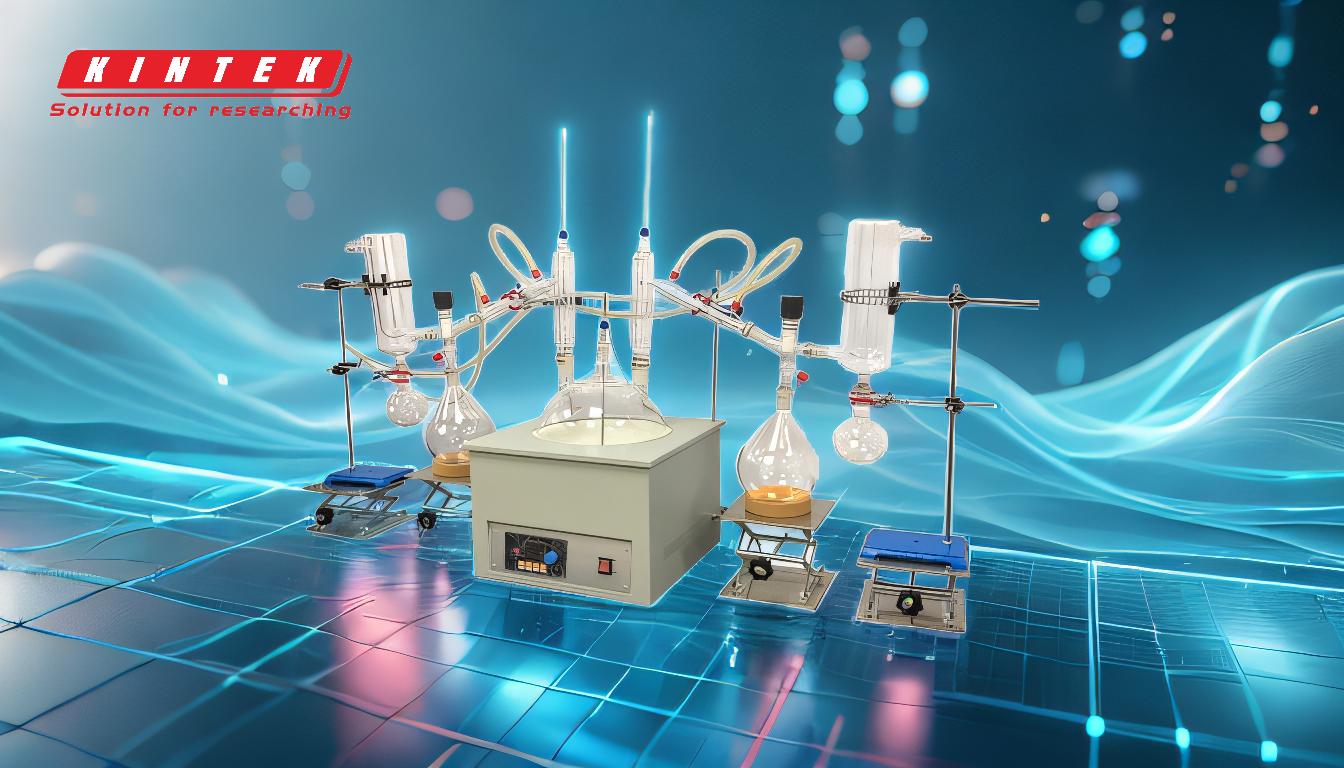Improving distillation time involves optimizing several factors to enhance the efficiency of the process without compromising the quality of the output. Key strategies include increasing the evaporation rate through mechanical methods like thin film, wiped film, or rolled film techniques, which spread the liquid over a larger surface area. Additionally, adjusting operational parameters such as increasing the RPMs, raising the bath temperature, and lowering the condenser temperature can significantly speed up the distillation process. These methods collectively ensure a faster and more efficient distillation while maintaining the integrity of the distilled product.
Key Points Explained:

-
Mechanical Techniques to Increase Evaporation Rate:
- Thin Film Distillation: This method involves spreading the liquid into a thin film over a heated surface, increasing the surface area exposed to heat and thus enhancing the evaporation rate.
- Wiped Film Distillation: In this technique, a mechanical wiper spreads the liquid into a thin film on the inner surface of a heated cylinder. The wiper continuously renews the film, maximizing evaporation efficiency.
- Rolled Film Distillation: Similar to wiped film, this method uses rollers to spread the liquid into a thin film, ensuring a large surface area for evaporation.
-
Optimizing Operational Parameters:
- Increasing RPMs: Higher rotational speeds in the distillation apparatus can improve the distribution and renewal of the liquid film, leading to faster evaporation rates.
- Raising Bath Temperature: Elevating the temperature of the heating bath increases the energy transferred to the liquid, accelerating the evaporation process. However, care must be taken to avoid overheating, which can degrade sensitive compounds.
- Lowering Condenser Temperature: Setting a lower temperature in the condensers enhances the condensation efficiency, allowing for quicker separation of the distilled product from the vapor phase.
-
Balancing Speed and Quality:
- While increasing the distillation speed is desirable, it is crucial to balance this with the need to maintain the quality and purity of the distilled product. Overly aggressive conditions can lead to thermal degradation or incomplete separation.
- Monitoring and fine-tuning the operational parameters in real-time can help achieve an optimal balance between speed and quality.
By implementing these strategies, you can significantly improve your distillation time while ensuring the process remains efficient and effective.
Summary Table:
| Strategy | Description |
|---|---|
| Mechanical Techniques | |
| - Thin Film Distillation | Spreads liquid into a thin film for increased surface area and evaporation rate. |
| - Wiped Film Distillation | Uses a wiper to renew the liquid film, maximizing evaporation efficiency. |
| - Rolled Film Distillation | Employs rollers to create a thin film, ensuring large surface area exposure. |
| Operational Parameters | |
| - Increase RPMs | Higher rotational speeds improve liquid film distribution and renewal. |
| - Raise Bath Temperature | Elevates energy transfer to the liquid, accelerating evaporation. |
| - Lower Condenser Temperature | Enhances condensation efficiency for quicker separation of distilled product. |
| Balancing Speed and Quality | Monitor and fine-tune parameters to avoid thermal degradation or incomplete separation. |
Ready to optimize your distillation process? Contact our experts today for tailored solutions!










